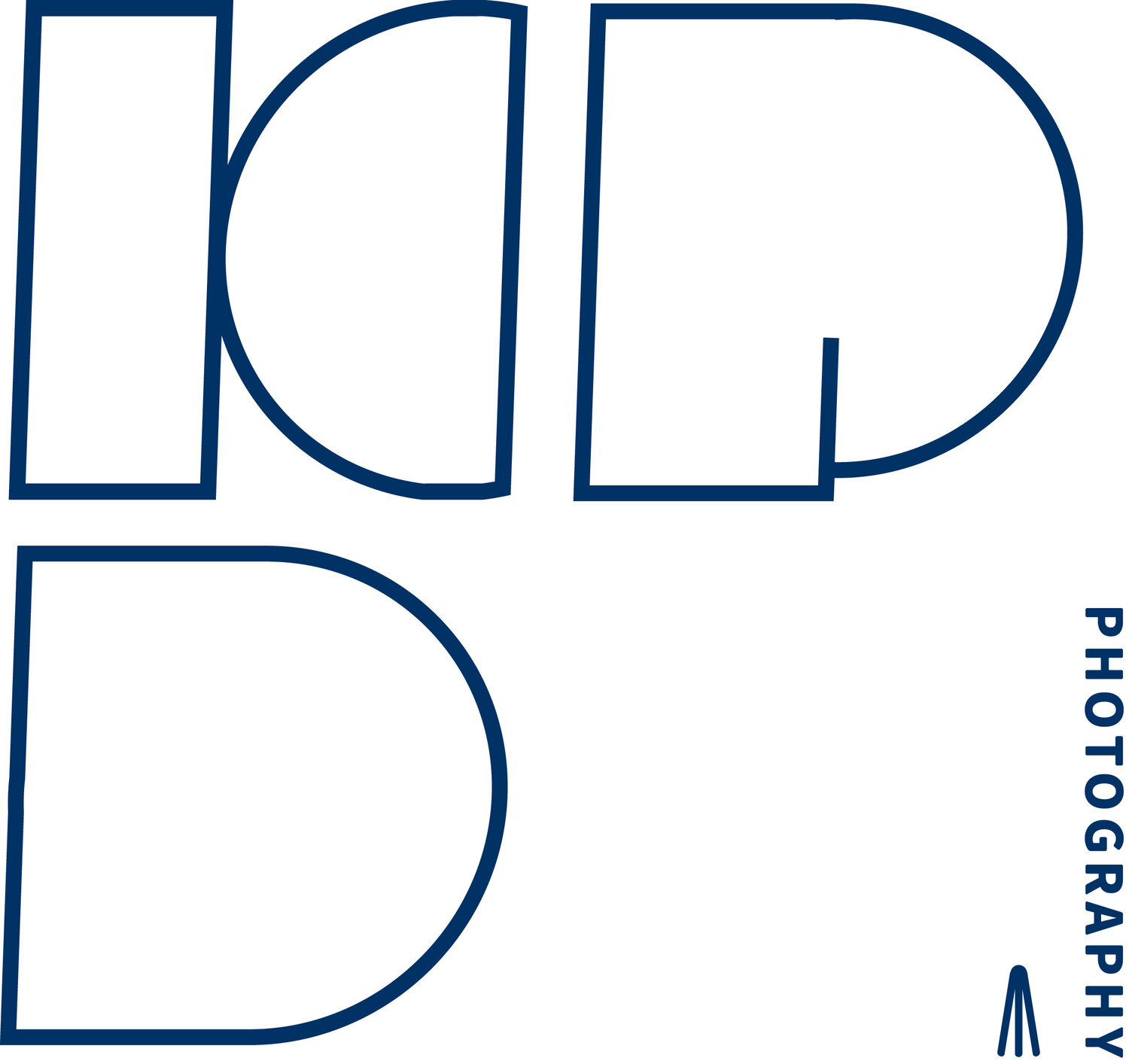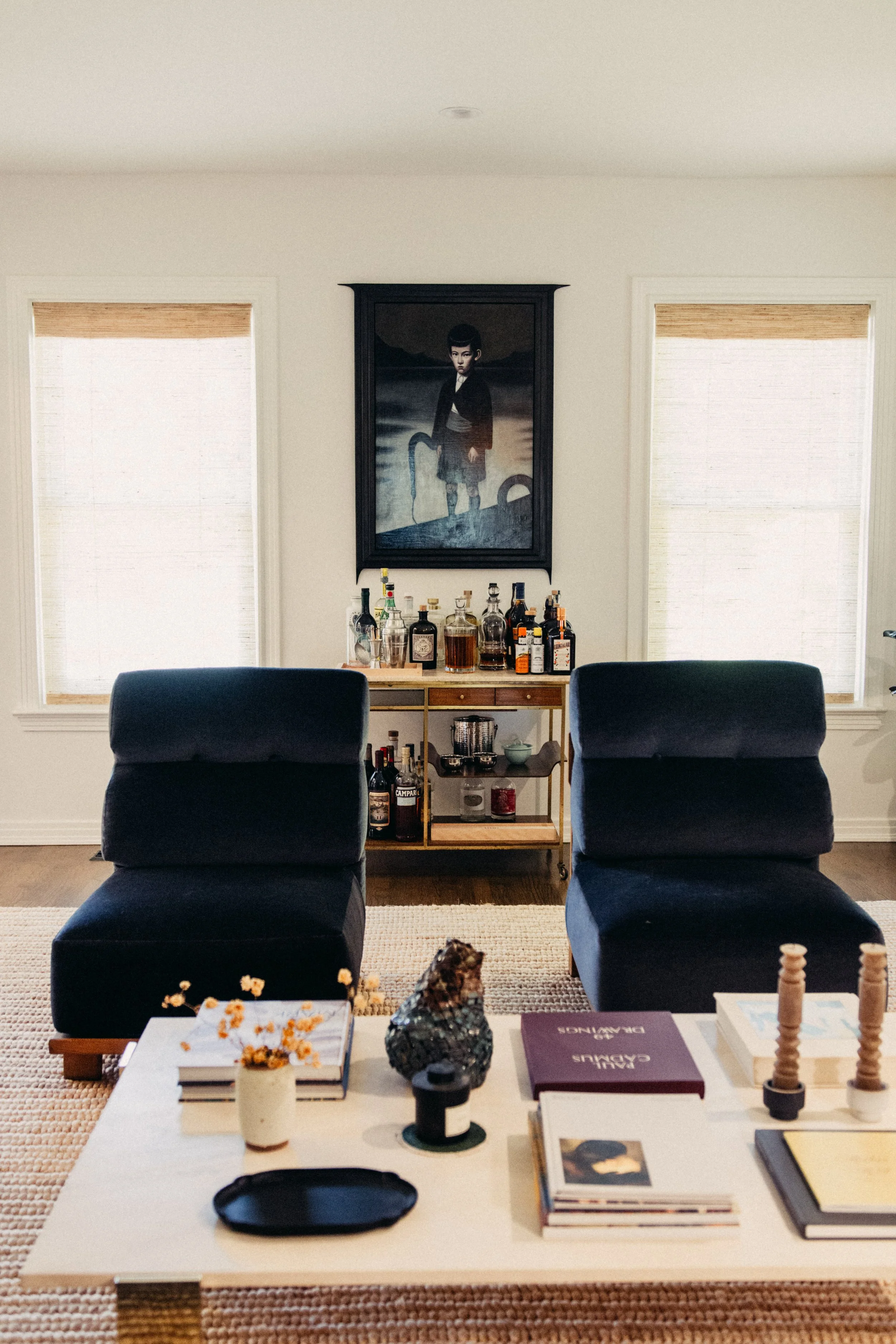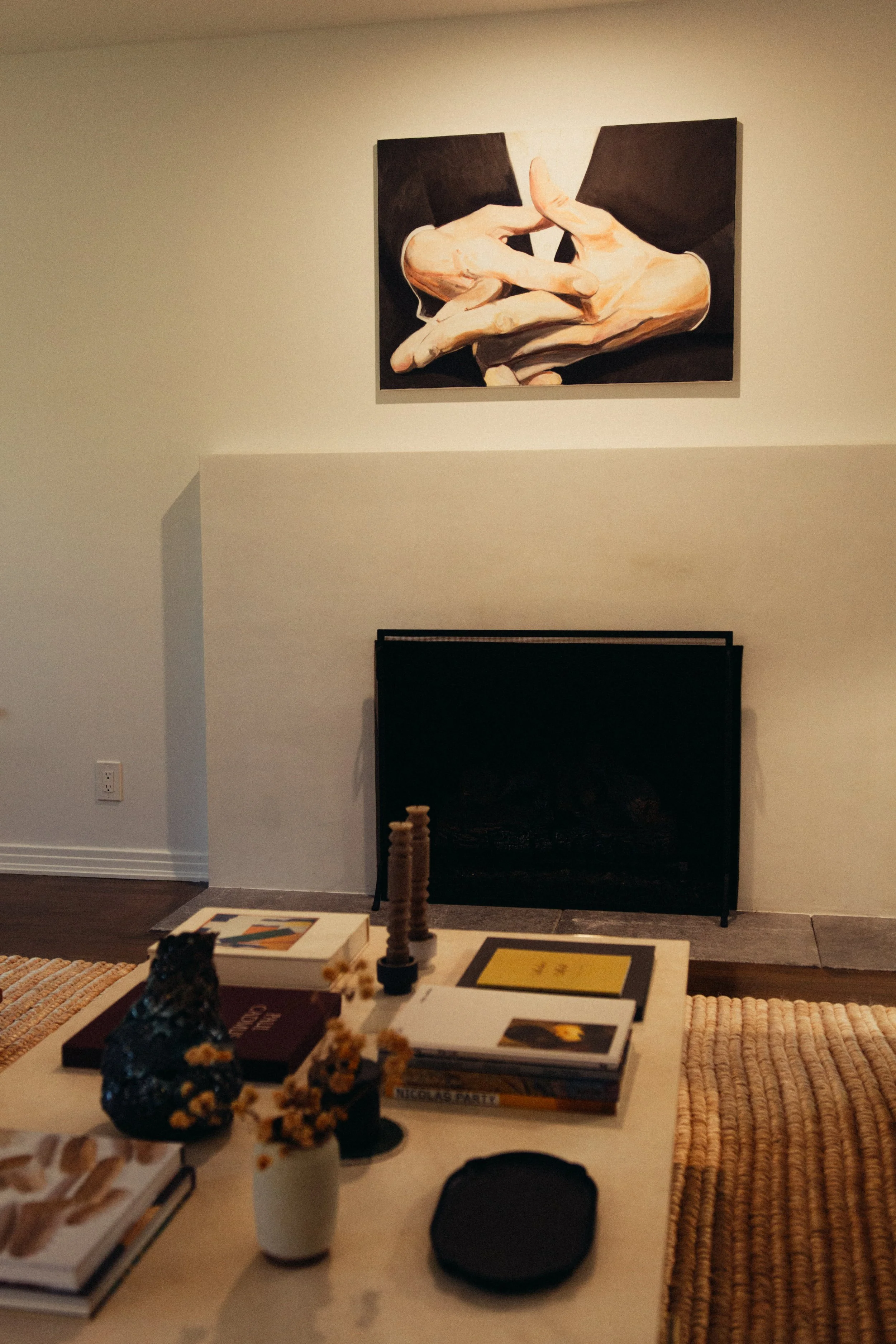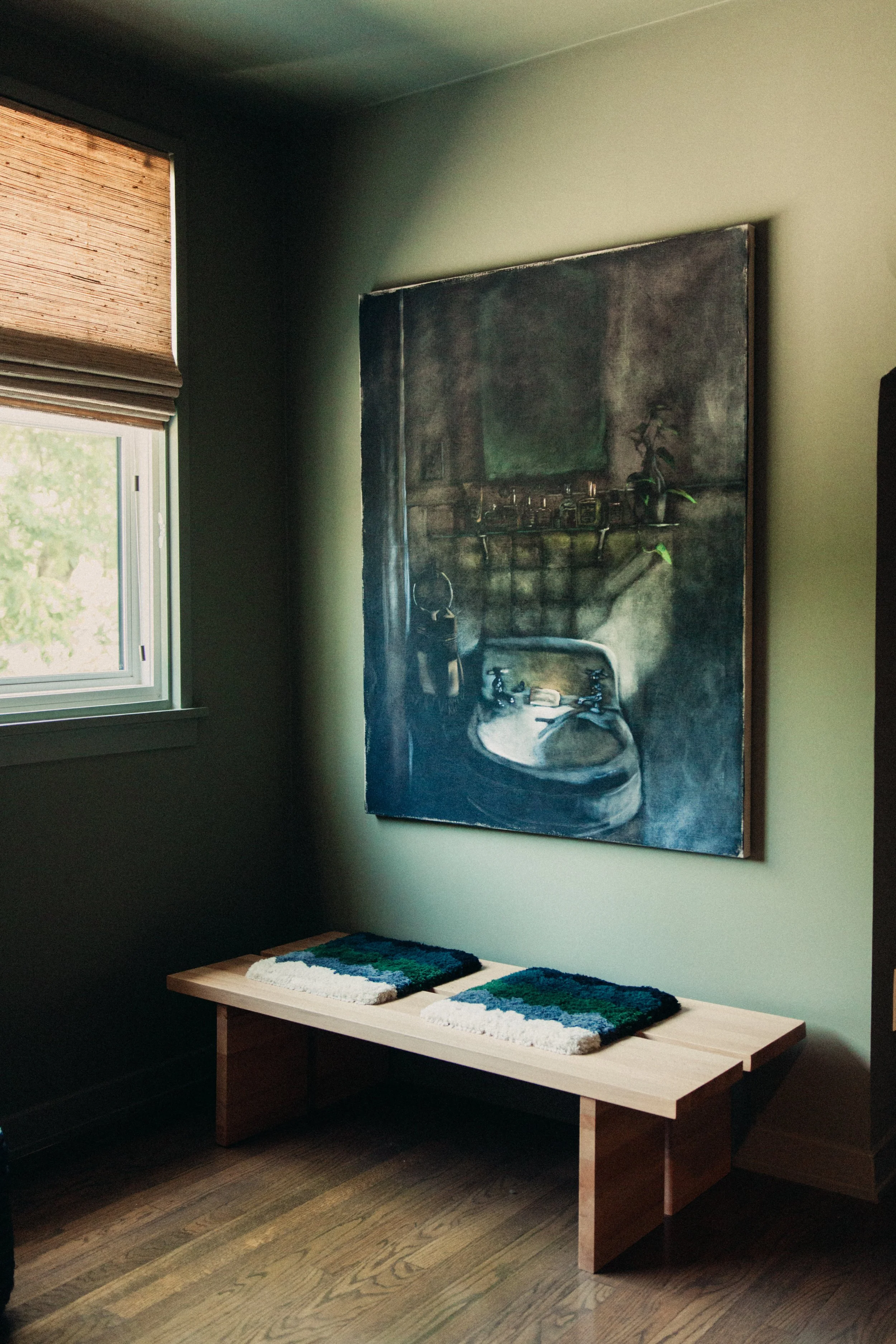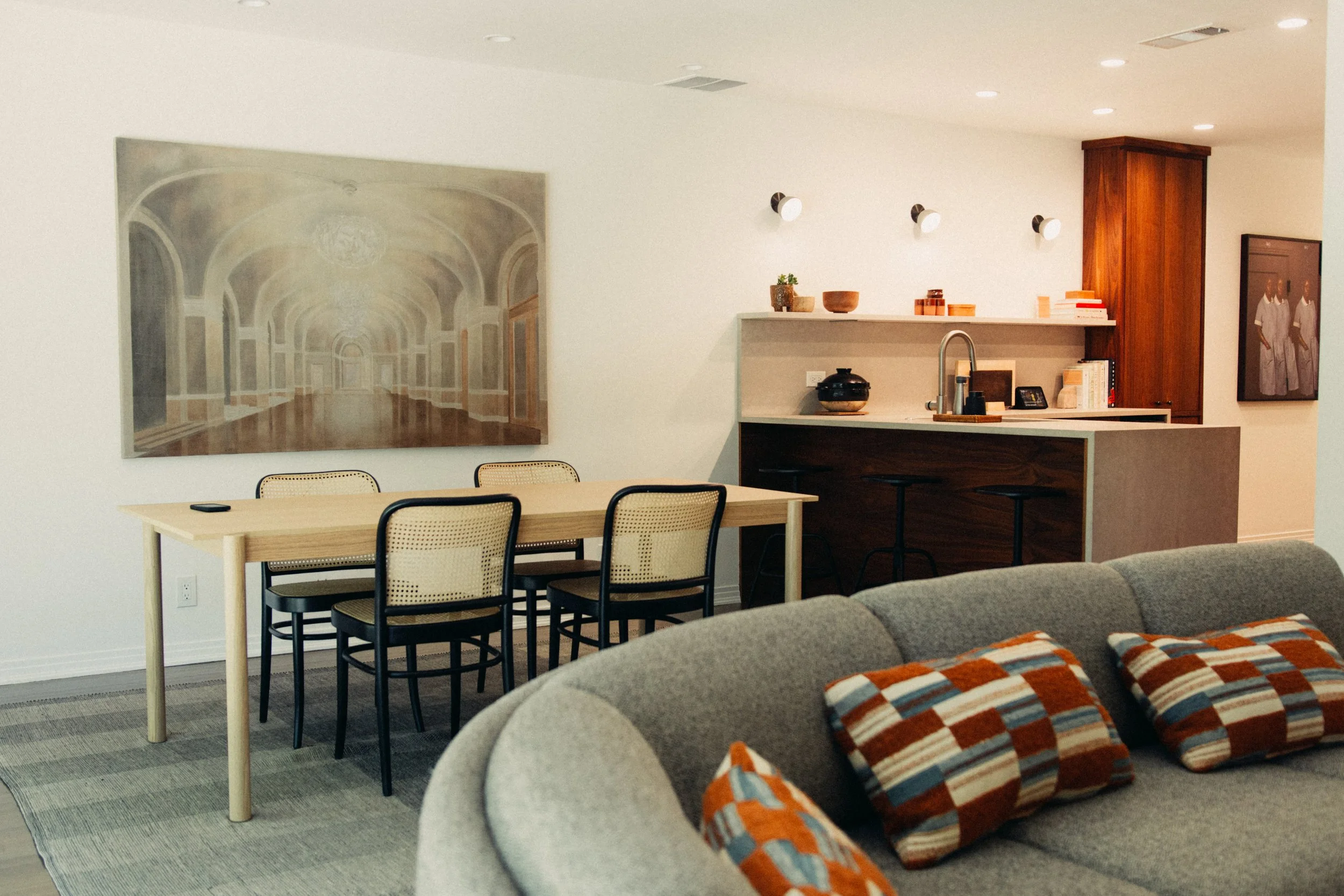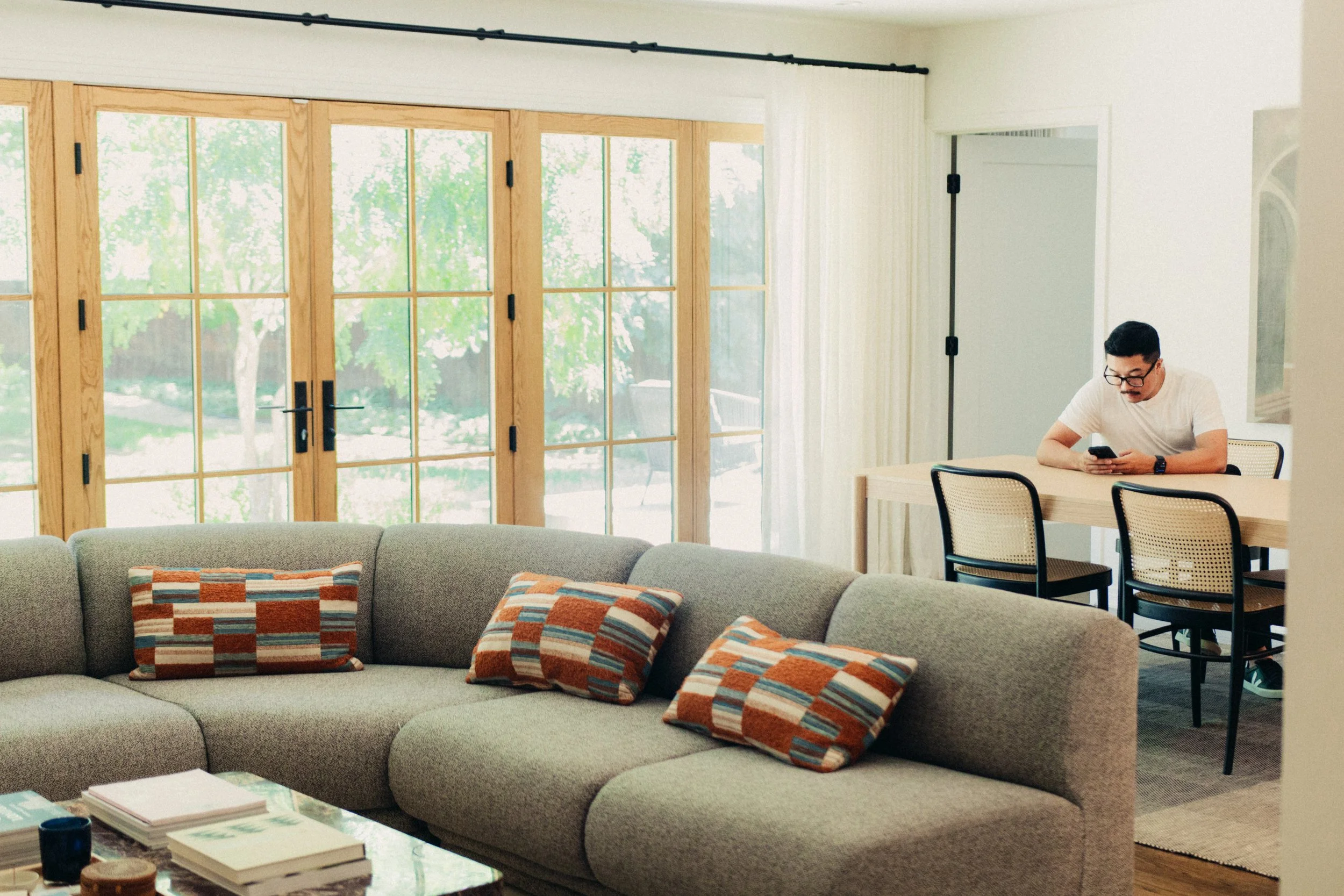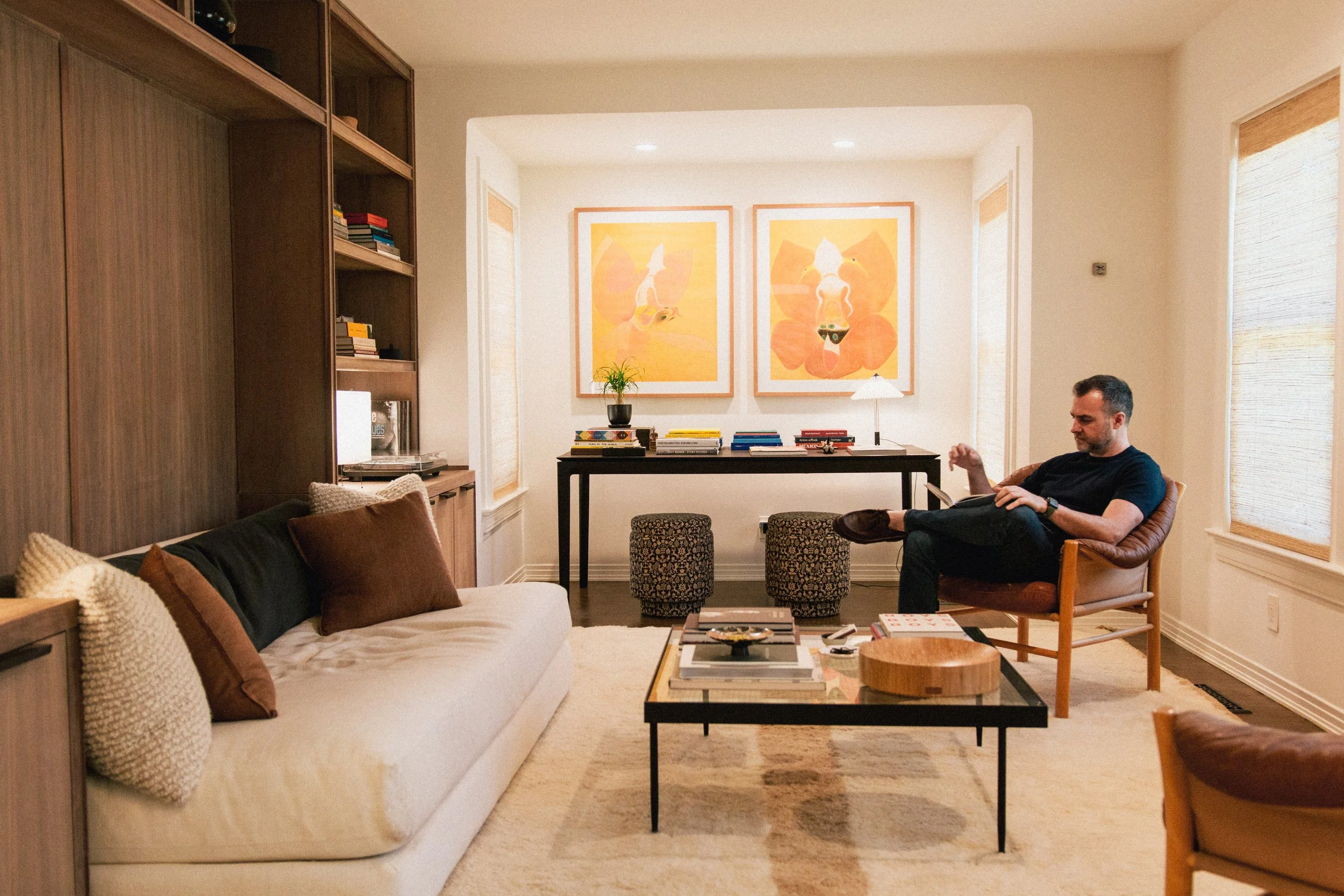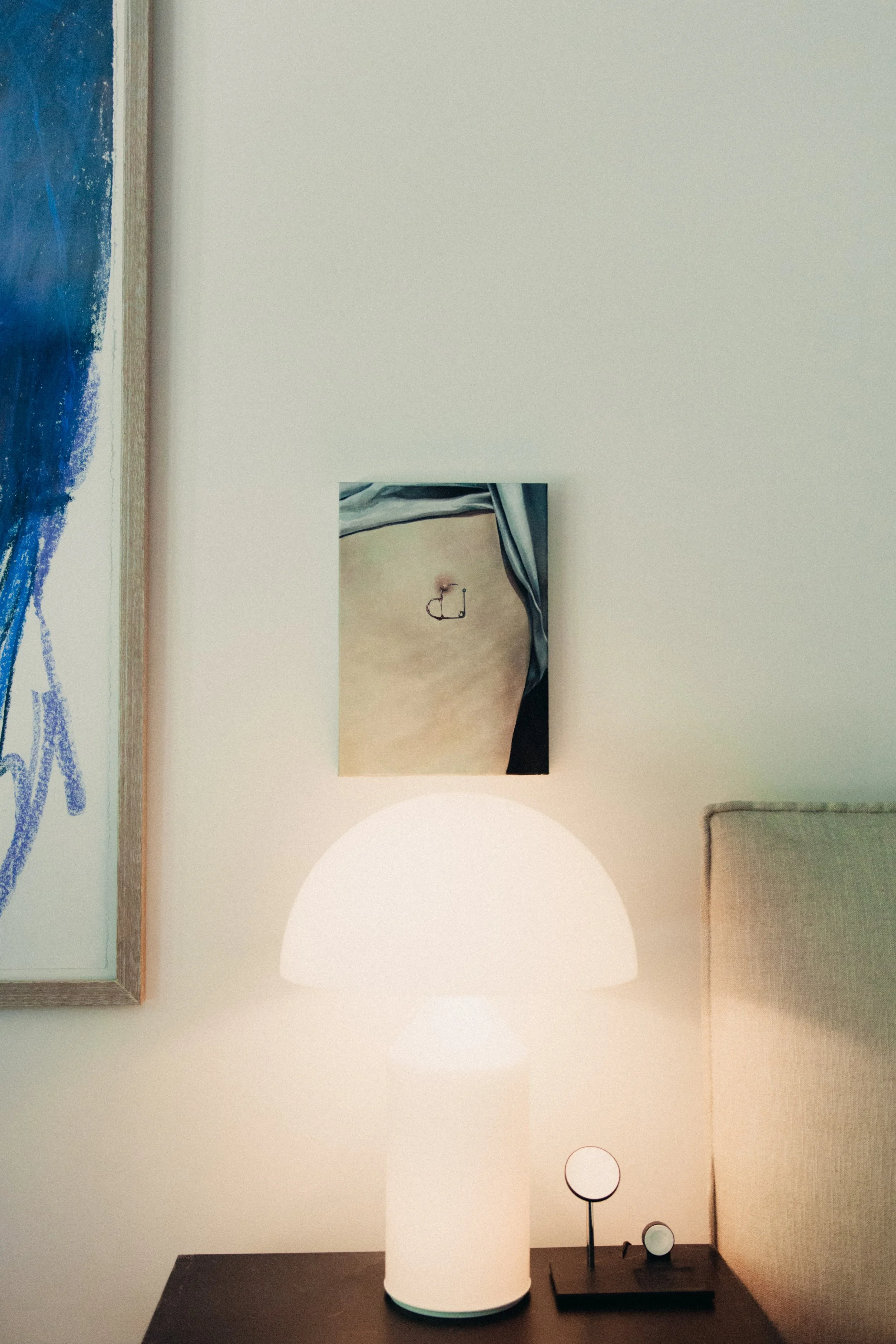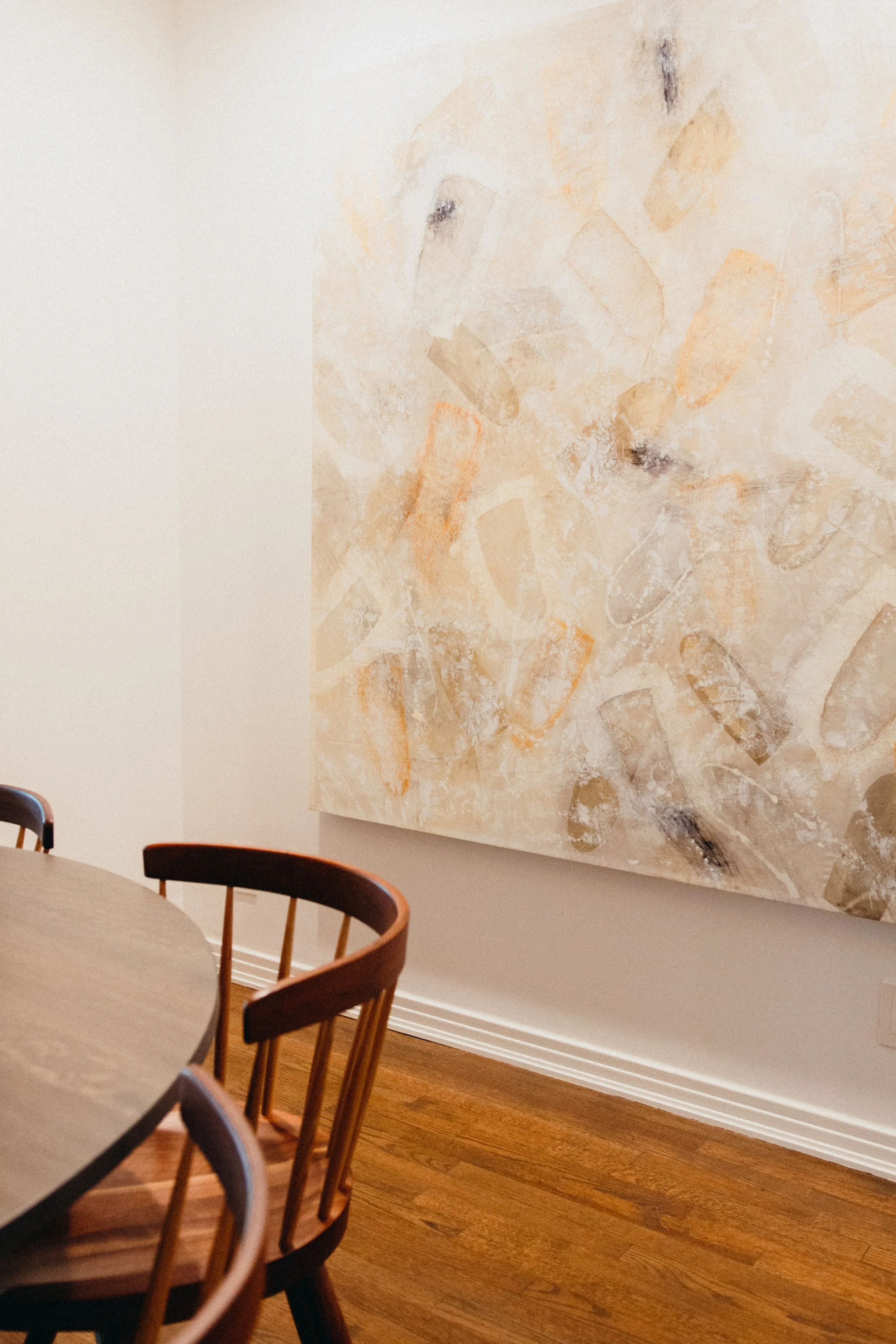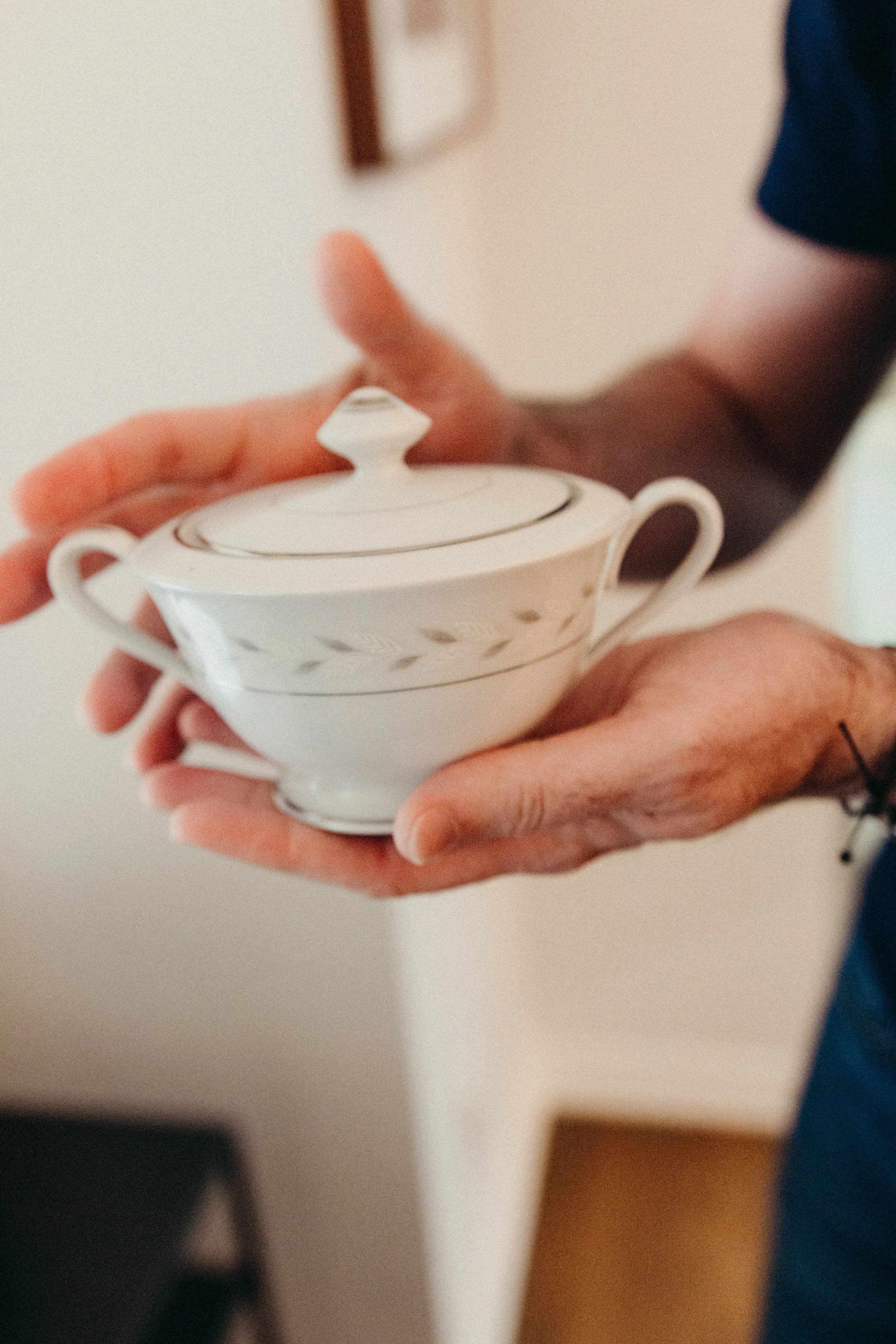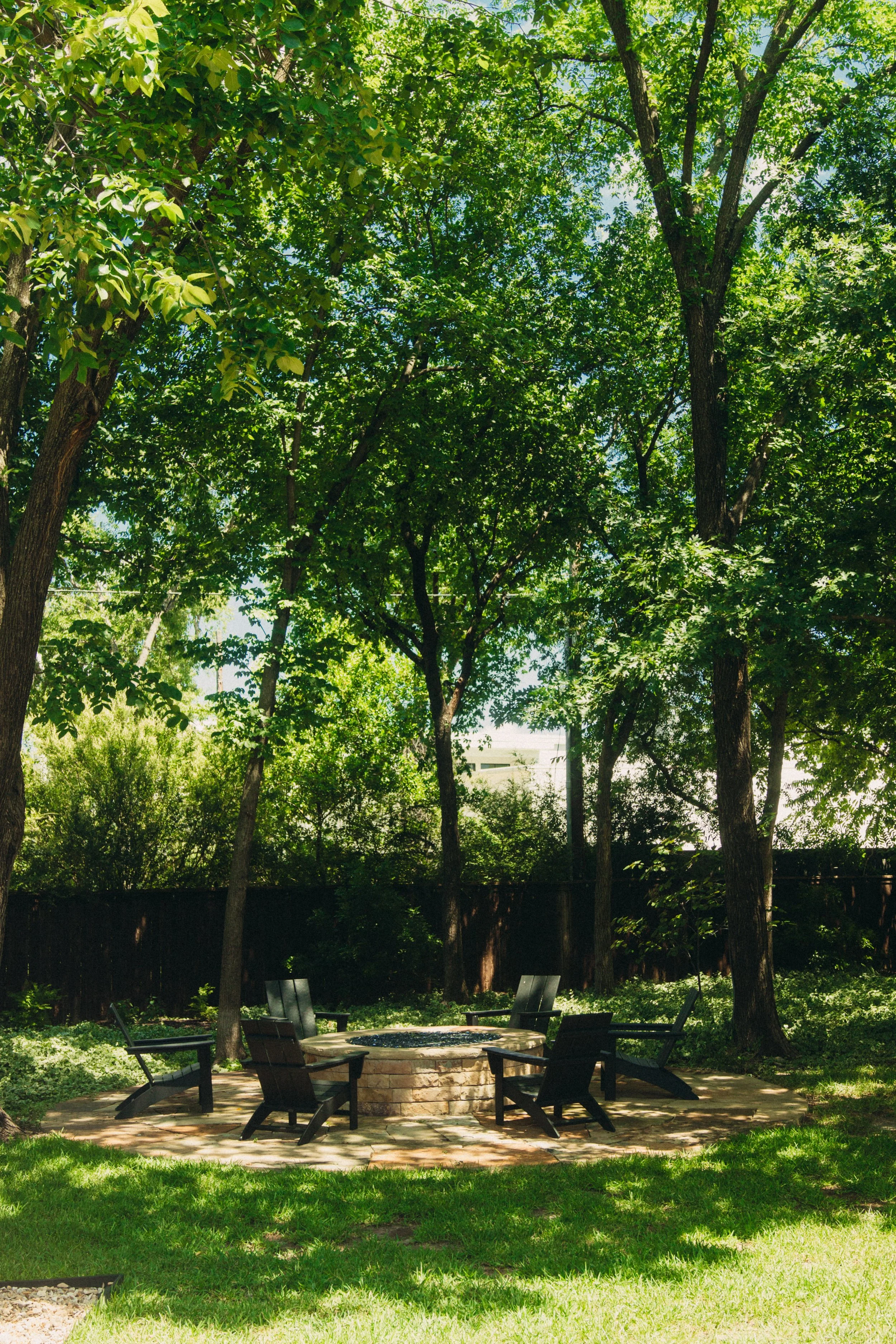My Palace in Dallas - Michael Fountas and David Liu
“Solitude requires you to move past reacting to information created by other people and focus instead on your own thoughts and experiences – wherever you happened to be”
Hi everyone, missed me? I will just assume you all do, after taking a little break from shooting and talking away, it’s good to be back sitting in front of my laptop, going through the recording every night, like how every article here is born. We’ve got some fun plans in the works for those who stumble upon this blog, and I can’t wait for all of them to meet y’all!
I started My Palace in Dallas during the height of the pandemic, and it was born from pure curiosity: I want to know, I want to see, and, most importantly, I want to document what the people around me have become after these unprecedented years. They can be artists or comedians, or they can also be the people you meet on the street—which is quite hard cause, supposedly, people in Dallas don’t walk at all. So, what is it that they do? This project delves into their stories and, as the name suggests, explores their Palace in Dallas.
Without further ado, I’d like you to meet Michael Fountas and David Liu. A lovely friend of mine, Brittani, introduced me to David and Michael on a breezy autumn night as we walked out of Dallas Contemporary in 2023. Having seen each other often in gallery openings for amazing shows and gotten to have the courage to say hi to them every time I saw them, I decided it’s time to spend a lovely afternoon with them and hear about their story. We talked about their journey, collection, collecting, being in Dallas, and followed them around as they gave me the best tour of the house.
Hello David and Michael! Thank you for sitting down with me today! Before I bomb you with questions, for anyone who might not have the chance to know who you are, would you like to tell me a bit about yourself? Who are you, and what is it that you do?
David: I’m David, a Dallas native, and one of the co-owners of DC International, a vertically integrated retail company. We’re headquartered here in the Dallas Metroplex and currently operate two brands: Leatherology, a personalized leather accessories brand, and Coverstore, which focuses on outdoor covers and storage solutions.
Michael: I’m Michael. Unlike David, I’m not a Dallas native. I was born in New York, grew up in Florida, and moved here together nearly ten years ago. Today, I lead global philanthropy and corporate giving at Alcon, a global eye-care company.
Both of you wore many hats in the community: avid art collectors, pillars in supporting Dallas’ art scene, and owner of Brand Leatherology. Could you tell me what the journey was like for you? How did you get to where you are now?
David: To take a step back—Michael and I have been together for 17 years. We first met in D.C., then spent several years in New York and London before eventually moving back to Dallas. As a Dallas native, it was a natural return for me, and I rejoined my family’s business while Michael further built his career here.
Michael: It was really only once we arrived in Dallas that we started putting down roots: buying our first home, beginning to collect art, and finding our place in this community. Dallas might not be our “forever home,” but it’s been the place where we built a strong foundation. Once we stopped moving so much, we were able to focus on building community—meeting people across different fields who shaped us both personally and professionally.
David: We were intentional about also seeking out and contributing to what makes Dallas vibrant. You don’t have to be in the so-called “epicenters” to be surrounded by culture—it’s thriving here too. That realization fueled our desire to plant roots and engage more deeply with what’s happening around us.
When you two decided to make Dallas your home and build a nest, learning and became involved in the community around you. Was becoming an important pillar of the scene, a surprise for both of you?
David: Honestly, it’s been a very organic process. We’re passionate about the arts, but we still see ourselves as just a small thread in this much larger fabric. Dallas has incredible collectors, artists, curators, and philanthropists—we’re still learning from them every day. To be honest, it feels a little funny to even be called “pillars.” We certainly don’t see ourselves that way at all, but if we can contribute in small ways, that’s meaningful to us.
We never set out with the goal of becoming collectors or deeply integrated in any “scene”. It all happened naturally—through friendships with gallerists, curators, and artists, each encounter shaping our journey as we found our identity here. Dallas’s smaller scale makes it uniquely tight-knit.
Michael: One thing we truly love is bringing people together. Hosting gatherings at our home is one of our favorite ways to do that. During Dallas Art Fair week, when curators and gallerists fly in from all over, it’s especially fun—we get to showcase the thriving community here to people who might not otherwise experience it.
Hosting is a big part of how we connect. Whether it’s during Art Week or just a random evening, we love creating a casual, creative atmosphere. The last few years, we have turned our backyard into a little beer garden—good food, music, friends—it felt less like a formal event and more like an evening off, which is exactly our style.
Do you guys remember when you acquired your first art piece?
David: Collecting is a broad term. We’ve always collected things together, but our first real step into art collecting came when we moved back to Dallas around 2016 or 2017. At that year’s art fair, we bought a piece we knew we wanted to live with forever—it was the moment we realized, “Oh, this is something we can actually do.”
There’s a perception that art collecting is out of reach, but it doesn’t have to be. There are incredible artists working across mediums and price points, and I believe there’s a way for everyone to participate and build their own voice as a collector.
After realizing collecting is something you could do, how did you develop your taste in what you want in terms of viewing and collecting?
David: Our taste is still evolving—and probably always will. People sometimes ask if there’s a theme to our collection, but for us, it’s less about a theme and more about reflecting where we are at different stages of life. If there’s a common thread, it’s that we gravitate toward contemporary and emerging artists with distinct voices that mirror their own journeys.
I’ve always thought of art as a kind of living history. Back in middle and high school, I remember studying art in humanities class—art was the lens that made history come alive. Contemporary work feels the same to me now: it’s a reflection of the world we’re living in, right in this moment.
Michael: I can’t take much credit—David’s the one who dives into the research and learns the stories behind the pieces. For me, it’s often about the relationships. Many works we live with are tied to artists we’ve met or done studio visits with, so there’s usually a personal story attached.
David: Michael’s more instinctual—if he likes something, he knows right away. I’m the one who needs to study it a bit.
Michael: That said, a few artists have completely changed my perspective after talking to them. Understanding the process often deepens the appreciation—it’s not just about the visual, but the story behind it.
Are there pieces or moments where you acquired a piece without getting to talk to or learn more about the artist?
David: We definitely haven’t met every artist we’ve collected from. We’ve been fortunate to work with great galleries here in Dallas, across the U.S., and internationally. Studio visits and friendships with artists have been a special part of the journey, but it’s never been a requirement for us to know the person behind the work before deciding to live with it.
To further peek into who you are, can you tell me where you usually get your inspiration from?
Michael: A lot of our inspiration comes from traveling. David and I travel often, and so many experiences abroad leave an impression—whether it’s a landscape, a conversation with someone new, or even the rhythm of daily life in a different culture. It’s about noticing how people live, create, and connect. Different cultures, old and new, always spark something in me, and those impressions often stay with me long after the trip is over.
Was there something in specific you kept an eye out for and opened up those receptors for during your travels?
Michael: We don’t usually go looking for something specific—we try to let everything in and just let the experience wash over us. For me, that often ties back to cooking. We’ll be at a restaurant halfway across the world, tasting something new, and months later I’ll find myself in our kitchen trying to recreate it. That’s the kind of inspiration that sticks and follows me home.
It’s been five years since the pandemic hit, and for some reason, we all came out alright, if not stronger. What did you do to stay centered and sane? Have any of those new habits carried over now that things are back to normal?
David: At the start of COVID, we sold our place in Oaklawn and moved here. With two dogs, we realized we needed more space and a yard. Before the pandemic, we were constantly checking off destinations from a long travel bucket list. Afterward, our focus shifted—we stopped chasing far-flung trips and started returning to places that meant something to us. London, where we lived for a few years, is now an annual visit. We also love going back to Japan, where my godbrother lives, and Taiwan, where part of my family is from—though Michael still jokes that I haven’t managed to take him there yet. *laughs
Michael: The timing has just never worked out! *laughs But one big change since the pandemic is how much more we value quality time with the people closest to us. Before, our schedules were often packed with travel or events, but during that pause, we discovered how grounding it was to slow down. We’ve become more intentional about staying connected with family, whether it’s visiting them more often or setting aside time for calls. Those slower, more personal rhythms are something we’ve carried forward and don’t take for granted anymore.
What was the process like designing and decorating a place you’d be excited to call home after deciding to stay in this city?
Michael: We bought this house in 2020, but it took a long time to move in—renovating during COVID meant everything was delayed. Even a light switch could take six weeks to arrive. Despite that, the process was exciting.
David: I’ve always thought of a home as a kind of blank canvas, one you can keep reimagining. Michael teases me about how often I rearrange the art—if you lifted a piece off the wall, you’d find way too many holes behind it. laughs. Rearranging furniture or moving a piece of art can completely change the feel of a space, and that’s been an ongoing part of living here. We worked with an amazing designer, Jennifer Littke, who really helped curate a space that feels like “us.”
Michael: Before owning a house, we always bought furniture as temporary solutions for apartments. This was the first time we worked with someone to translate a vision across an entire home—down to details like wood stains and bathroom finishes. There was a lot of trust in the process, and it really paid off.
And, as with our travels, inspiration shows up in the objects around us. On the table are bowls from South Carolina, cups from the South of France, pieces from Tokyo, and trinkets from Sydney. Each item carries a memory, and together they create a home that feels personal and layered.
I’m sure you have your fair share of traveling experience and exposure to different scenes across the states and even countries. From an industry perspective, what do you think sets Dallas apart from all the other well-known big cities or any other city you’ve been to?
David: What’s always drawn me to Dallas is its potential. It’s a city where people want to make an impact, and there’s still room to grow without being drowned out by noise. In business, that matters. With Leatherology, for example, building an accessories brand in New York or L.A. would mean constant comparison to others. Here in Dallas, we had the space to carve out our own identity.
The same is true personally. I don’t think we would have started collecting art if we hadn’t lived here. Dallas made collecting approachable in a way that some other cities don’t. The art fair here was our entry point—it opened the door to other programs and galleries across the country.
Of course, Dallas isn’t perfect. I wish it were more walkable and had better public transportation. But even with its flaws, I believe in the unique opportunity to shape the city in meaningful ways.
Michael: David grew up here, so he’s seen the evolution firsthand. For me, what stands out is the entrepreneurial spirit. Dallas is known for attracting big national chains, which is exciting in one sense, but I’d love to see even more support for small businesses. They bring such unique perspectives, and that’s what makes a city truly dynamic.
Are you a Dallas native? Having spent quite some time finding your identity and setting roots here, what do YOU personally think of this city?
Michael: I may have grown up in Florida, but the heat here still gets to me *laughs. I do feel the city still has gaps: public transit, walkable neighborhoods, and access to nature to name a few. What I love, though, are the people. There’s a genuine kindness and warmth in Dallas that you don’t always find elsewhere, and it’s what’s made this place feel like home.
David: I share Michael’s wish list for improvements. I guess the tradeoffs are part of what makes Dallas, Dallas. And while it’s not always obvious, the city is more diverse than it gets credit for, sometimes even more so in the suburbs than in the city center.
Michael: We don’t confine ourselves to one neighborhood. Some of the best food we’ve found is tucked away in the suburbs—Arlington, Grand Prairie, even Plano. We like pulling friends out of their bubbles and showing them what’s beyond their usual haunts. Honestly, this perspective would probably be the same no matter where we lived. With age, you learn to appreciate what you have instead of always wondering if life would be better somewhere else.
David: I remember one brunch in New York where I half-jokingly asked Michael if we should move back. Right then, a pigeon dive-bombed into my curry, and we decided Dallas was just fine. *laughs
As I look around, I can see a lot of your taste in a tangible form! Now, the hard part is, what would you say is your most prized possession in your home?
Michael: We spend a lot of time in this part of the house, so during the renovation, it was important to us to open up the view to our backyard. Now, whether we’re sitting on the sofa or in the kitchen, we often find ourselves just looking out. Even something as simple as that feels grounding—it’s our little connection to nature.
David: One of my most sentimental pieces is actually our sofa. It’s the same one I grew up with—it’s been reupholstered multiple times and has lived in different homes with us. Michael jokes that it’s like the “sisterhood of the traveling sofa.” laughs. It carries all those layers of memory with it.
Michael: For me, it’s less about one object and more about the spaces. The library in the front of the house is my favorite—I’ll sit there with a book and the dogs, vinyl playing, light pouring in. It’s a serene little pocket of our lives.
David: That room also holds some of my favorite works of art, like pieces by Paul P. and Douglas Rieger. We even have a work by his wife, Antonia Kuo, in another room, which makes it feel like part of a family dialogue.
Michael: We don’t do it as frequently anymore, but something that’s super special to us here is in this box, ornaments and trinkets we’ve collected through our travels.
David: One funny thing I’ve noticed is that our collection has accidental themes—like nipples everywhere. laughs Totally unintentional, but you start to see these patterns emerge over time
Michael: When my parents downsized from my childhood home, we all got to choose something to pick, and I went home with their wedding China. They’re not all out, but we made a point to have some of them on display next to our favorite travelling cooking books. We only use them on very special occasions like Thanksgiving or Christmas. I mean, just look at this sugar bowl, it’s precious.
David: This painting is by Sonya Kelliher-Combs, acquired from Tureen, who showed her solo show during the independent fair in New York. Her practice blends indigenous traditions with synthetic materials in a way that’s uniquely hers
David: This is by Ryan Huggins. At his solo show in London, he had sixteen panels, all drawn from a bathhouse in Germany. Each set is a quadratic; there are four four-panel sets, and this is one of them. I just think it’s luminescent and beautiful. Everyone in this piece is naked, and some are getting it on in the corner.
And we are almost to the bottom of my list of Qs for today, for those who are interested in getting into this business or starting something of their own. What suggestions or advice would you like to give them, or wish you had known sooner?
David: My biggest advice is to be patient—with your craft, but also with the process. These days, there’s so much pressure to see immediate results, but most worthwhile journeys aren’t linear. They twist, turn, stall, and then surprise you.
Michael: I’d add that it’s important to find joy in the process, not just the outcome. If you’re only chasing the end result, you’ll miss the small wins and connections along the way. Trust that if you put in the time and effort, you’ll end up much further than where you started, even if it doesn’t look like progress in the moment.
To wrap this interview up, also because I am curious personally, what’s on the horizon for you? Are any “Big things coming” in the works for you? What would you like the world (whichever random soul stumbled upon this article) to know about?
David: After 17 years together, we finally got married this summer. We celebrated with our closest friends and family in England, which is obviously near and dear to our hearts.
Michael: And with this new chapter, we’re also saying goodbye to this home. It’s bittersweet—we’ve shared so many memories here—but we’re looking forward to creating a new home and making it just as much a reflection of us as this one has been.
James Kung : https://www.instagram.com/j_kung/
David Liu: https://www.instagram.com/davidliu_84/
Michael Fountas: https://www.instagram.com/michael.wandering/
Leatherology: https://www.leatherology.com/
In frame: Michael Fountas, David Liu
Photographer: James Kung
Interviewed by: James Kung
Location: Dallas, Texas
